Belfast Botanic Gardens is a public park in Belfast popular among office workers, tourists, and students. The garden opened as private Royal Belfast Botanical Gardens in 1828. It remained a private park for long but was opened for public on Sundays before 1895.
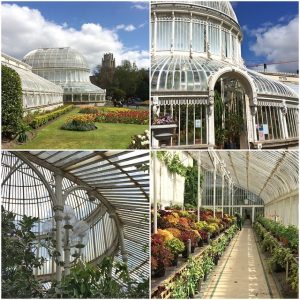
In 1895 Belfast Corporation bought the garden from Belfast Botanical and Horticulture Society and made it public park right then. The Belfast corporation is the predecessor of the present owner, Belfast City Council.
Table of Contents
The Palm House
The most notable feature of the garden is the Palm House Conservatory. Marquess of Donegall laid the foundation stone in 1839 and it was completed in 1840. It is one of the earliest curvilinear glass iron glasshouses in the world.
There are Two Wings
The Cool wing and Tropical wing in the Palm House. The cool wing displays color and scent through plants like begonia, fuchsia, geranium whereas the tropical wing is a fine example of horticulture Victoriana.
Both the wings were 65 feet long, 20 feet high and 20 feet wide. This was the work of well-known ironmaster, Richard Turner of Dublin. He was a pioneer in using wrought iron and is considered “the most important glasshouse designer in Ireland.”
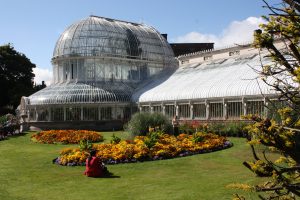
Standardized pieces of material and prefabricated items were used in the manufacturing of the structure. Things were manufactured off-site and were assembled in the garden. The dome was originally a low structure, but Turner decided to increase its height.
The 46 feet high elliptical dome was added to the structure by Young of Edinburg in 1852 providing space for the lofty plants to grow. The Palm House characterizes Victorian passion for horticulture and this was the time from when glasshouse technology started for nurturing exotic species of plants.
Palm House Belfast
With time, Palm House has gained recognition for collecting exciting plants. The dome area which was added after a few years contains temperate and tropical plants. There is a wide range of tropical plants, hanging baskets, seasonal displays and birds of paradise.
The Botanical Public House which nearby provides refreshments for students and tourists from the Botanical Gardens since 1867. There is a children’s park as well specially designed for small kids.
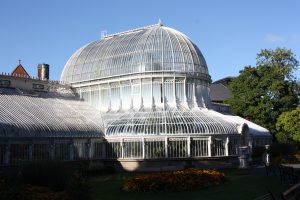
The garden features the longest border of herbaceous in UK and Ireland. Along with various other species of plants, hornbeam-oak is there. There is a beautiful rose garden which was added in 1932.
Unique Designs of Botanic Gardens
The Palm House and the Tropical Ravine House, which features a unique design, were symbols of the growing industrial valor and affluence of the Victorian era in Belfast. Even during the early days, this garden attracted over 10,000 visitors daily.
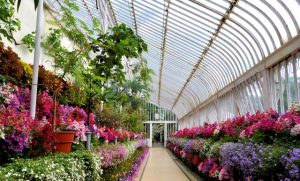
Like the Palm House, Tropical Ravine House shows how gardeners got benefited by the greenhouse environment for cultivating unusual species. You will find some of the oldest seed plants here along with banana, cinnamon, bromeliad and orchid plants.
Belfast Botanic Gardens Tropical Ravine
The Palm House structure and the Tropical Ravine House were quite popular during the Victorian era and they continue to be a place of attraction till date not just for the people of Belfast, but also for the people who visit Belfast to have a look at the garden.
Garden is still a popular place which gets confirmed by having 600,000 visitors visiting Royal Botanical Gardens every year.
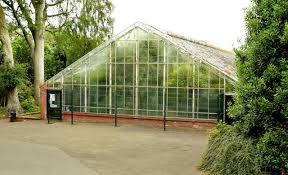
Nowadays concerts and music festivals are also held here. The Garden has been regularly improved while retaining its charm and making it well worth a visit.
It is well surfaced and the accessible walking routes will guide you through the garden so that you can discover the rose garden, giant bird feeders, a rockery, shrub borders, alpine garden, specimen trees, and sculptures.
More Info On- Edwardian Era Gardens, Edward Angelo Goodall